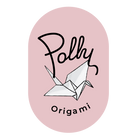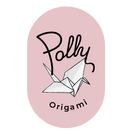Unique Origami Paper Textures: A Comprehensive Guide
Explore the various types and benefits of unique origami paper textures, including DIY methods and tools for enhancing your creations.
Origami, the ancient Japanese art of paper folding, relies heavily on the quality and texture of the paper used. Unique origami paper textures can elevate the aesthetic and functional aspects of your creations.
Types of Origami Paper with Unique Textures
Standard Origami Paper (Kami)
Kami is the standard origami paper, widely recognized and used by both beginners and experienced folders. It is characterized by its color on one side and white on the other, making it versatile for a variety of models. Kami is thin, typically ranging from 0.066 to 0.071 mm in thickness, and it holds creases well, which is essential for most origami designs.
The texture of kami paper is smooth and even, making it suitable for beginners and intermediate folders. Its smooth surface allows for easy folding and helps in achieving sharp creases, which is crucial for the precision required in origami.
Tant Paper
Tant paper stands out for its beautiful patterned texture and a nice sheen. It is thicker than kami, with a thickness of about 0.118 mm, and more durable, making it perfect for showcasing origami work. Tant paper is incredibly versatile and can be used to fold anything from simple models to complex ones.
The texture of Tant paper is patterned and glossy, adding an extra layer of visual appeal to the models. This unique texture makes Tant paper ideal for display pieces and for folders who want to add an extra aesthetic dimension to their creations.
Tissue Foil Paper
Tissue foil paper is a unique medium that combines tissue paper with aluminum foil. This combination makes the paper strong, stiff, and flexible. It is available in large sheets and various colors, making it a popular choice for both simple and complex origami models.
The texture of tissue foil paper features a metallic sheen from the foil, combined with the softness of the tissue paper. This blend of textures makes it easy to fold and shape, while the foil adds strength and rigidity to the model.
Triple Tissue Paper
Triple tissue paper, often handmade by specialized studios like Taro's Origami Studio, features layers of tissue paper for both color and strength. This paper is highly sought after by professionals for its unique texture and ability to hold creases well.
The texture of triple tissue paper is rich and layered, creating a look that photographs exceptionally well. The layered tissue paper gives the models a distinctive and appealing visual quality.
Creating Unique Textures
DIY Origami Paper
Creating your own origami paper can be a fun and creative process. Using gift tissue paper and methyl cellulose (MC glue), you can craft your own origami paper with unique textures. This method allows for various layers and combinations of colors and patterns, giving you full control over the final texture.
By introducing bubbles or using different layers, you can achieve rough, earthy, or blended textures. This DIY approach allows for endless experimentation and customization, making each piece of paper unique.
Adding Textures During the Making Process
Adding textures during the making process can enhance the uniqueness of your origami paper. Allowing bubbles to form and dry can create a unique, almost earthy texture on the paper. This method adds a natural and organic feel to the paper.
You can also paint the paper with various colors and designs before or after the drying process to add personalized textures and patterns. This step allows you to incorporate additional artistic elements into your origami paper.
Tools for Enhancing Textures
Scoring Tools
To enhance the texture and fold accuracy of your origami models, specific tools can be very helpful. A compass with needles is ideal for creating precise curves and lines without damaging the paper. These tools help score the paper accurately, which is crucial for achieving sharp folds and maintaining the texture of the paper.
Smooth wooden tools, often used in clay modeling, can be used to smooth out curves and make them more defined. These tools add to the overall texture of the model by ensuring that the folds are crisp and well-defined.
Applications of Unique Textures
Aesthetic Appeal
Unique textures can significantly enhance the visual appeal of your origami models. For example, Tant paper's patterned texture and glossy finish make it ideal for display pieces. The metallic sheen of tissue foil paper and the layered look of triple tissue paper also add a distinctive aesthetic to the models.
These textures not only make the models more visually appealing but also add a professional touch, making them suitable for exhibitions or as gifts.
Functional Benefits
Different textures can also affect the durability and foldability of the paper. For instance, the metallic layer in tissue foil paper adds strength and rigidity, making it easier to shape models without them breaking or tearing. The layered texture of triple tissue paper makes it easier to use wet-folding techniques, which can be challenging with other types of paper.
In summary, the choice of origami paper texture is not just about aesthetics; it also has functional benefits that can make the folding process easier and the final model more durable.
Conclusion
Unique origami paper textures can transform your creations from simple folds to intricate works of art. By choosing the right type of paper, creating your own DIY paper, and using the appropriate tools, you can achieve a wide range of textures that enhance both the aesthetic and functional aspects of your origami models.










